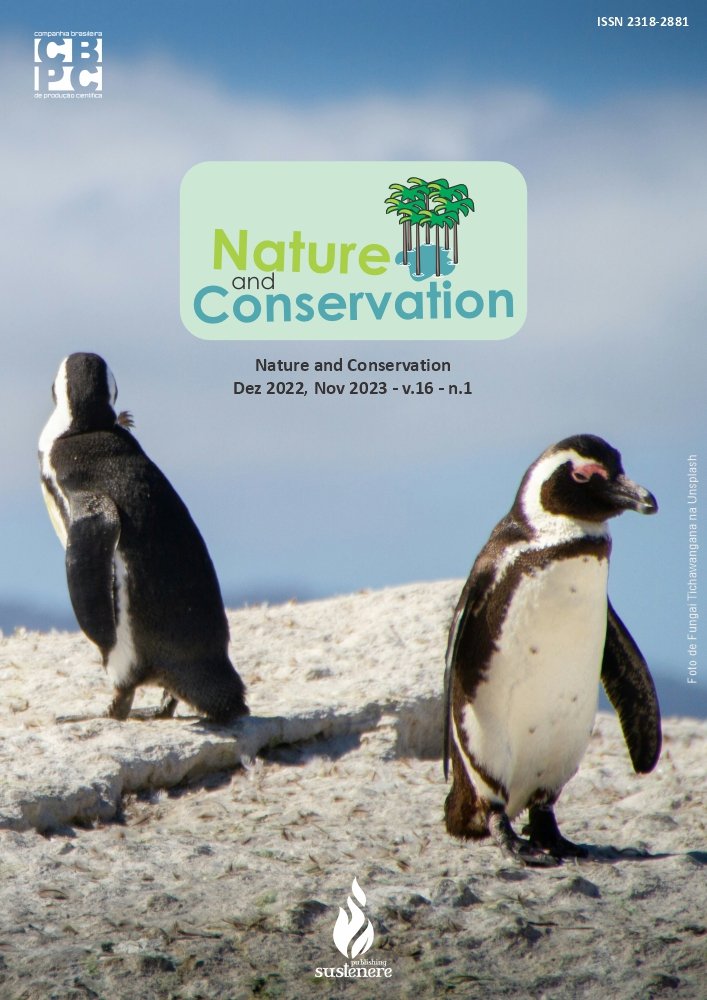Floristic composition and diversity index like outset transition method for agroforestry in Caatinga biome
DOI:
https://doi.org/10.6008/CBPC2179-6858.2021.010.0007Keywords:
Ecosystem services, Agroforestry system, Piauí semiarid, Ecosystem relationshipsAbstract
The recognition of remaining native species and ecological relationships between them at initial stages of agroforestry management is essential to understand the role of each species, their ecosystem services, and possible relationships with the species to be introduced. Therefore, the objective of this work was to identify the natural floristic composition and its ecosystem relationships in a ​​native area in the Caatinga biome for its recognition as an essential stage for the proposal and implementation of an agroforestry model, considering its great promotion of ecosystem services. The methodology used was floristic, phytosociological, and phytosanitary survey. The floristic survey consisted of an in loco inventory of forest data. The phytosociological survey consisted of evaluations of tree diameters at breast height, total number of individuals, relative density, basal area, relative frequency, relative dominance, importance value, coverage value, Shannon-Weaver diversity index, and Pielou equitability. The phytosanitary survey was caried out using a methodology adapted from the general condition index of trees, through the collection of information on phytosanitary conditions, injuries, necrosis, and infestations, generating an index based on the weighted arithmetic mean of the number of individuals within each class: good, satisfactory healthy, poor, or dead. The results obtained infer that the inventoried species presented good phytosanitary and phenotypic status under good environmental conditions, and were distributed throughout different botanical families of different habits. The indexes showed to be relevant for environmental assessments, corroborating the floristic and phytosociological data collected in the field, assisting in defining successional agroforest systems as the best transition alternative.
Downloads
Downloads
Published
Issue
Section
License
Copyright (c) 2021 Ibero-American Journal of Environmental Sciences

This work is licensed under a Creative Commons Attribution-NonCommercial-NoDerivatives 4.0 International License.
The CBPC - Companhia Brasileira de Produção Científica (Brazil CNPJ: 11.221.422/0001-03) the material rights of the published works. The rights relate to the publication of the work anywhere in the world, including rights to renewals, expansions and dissemination of the contribution, as well as other subsidiary rights. All electronically published works may subsequently be published in printed collections under the coordination of this company and / or its partners. The authors preserve the copyright, but are not allowed to publish the contribution in another medium, printed or digital, in Portuguese or in translation.









